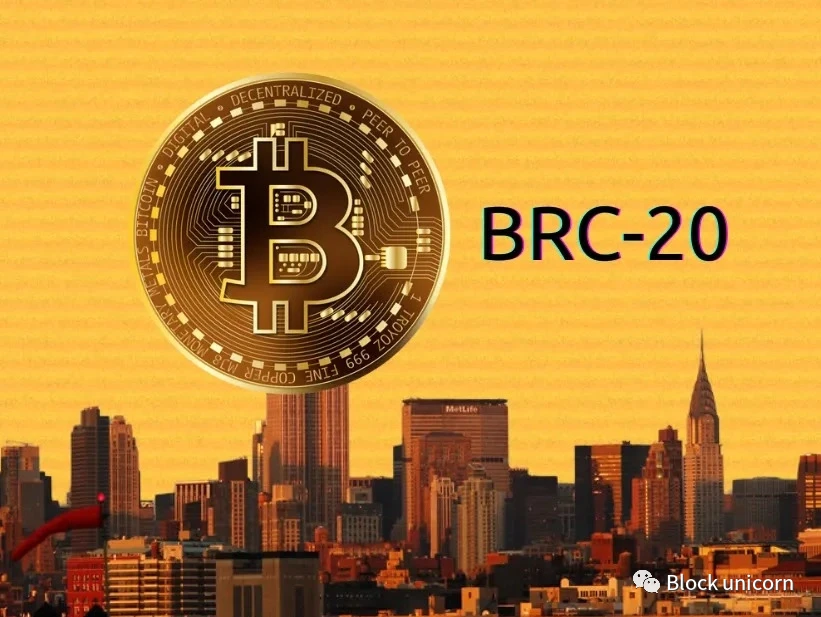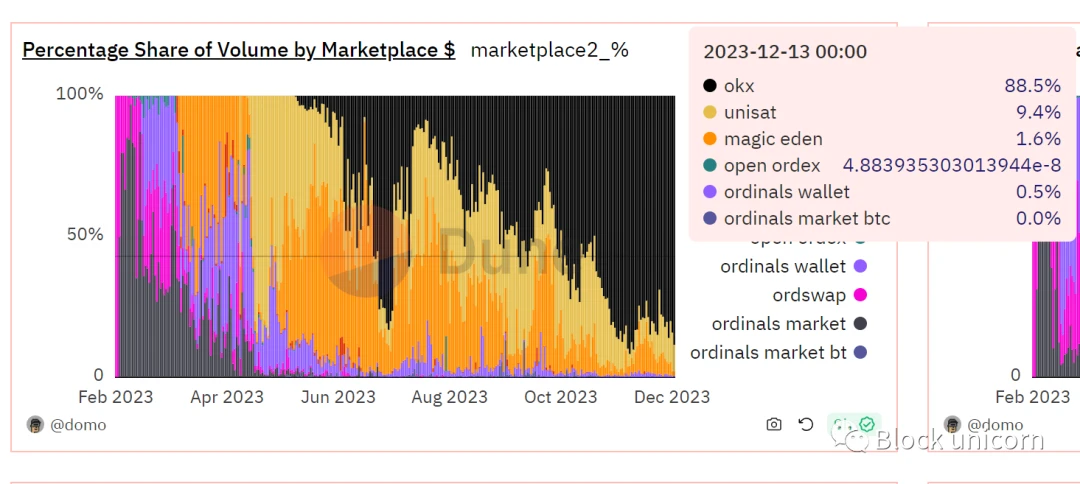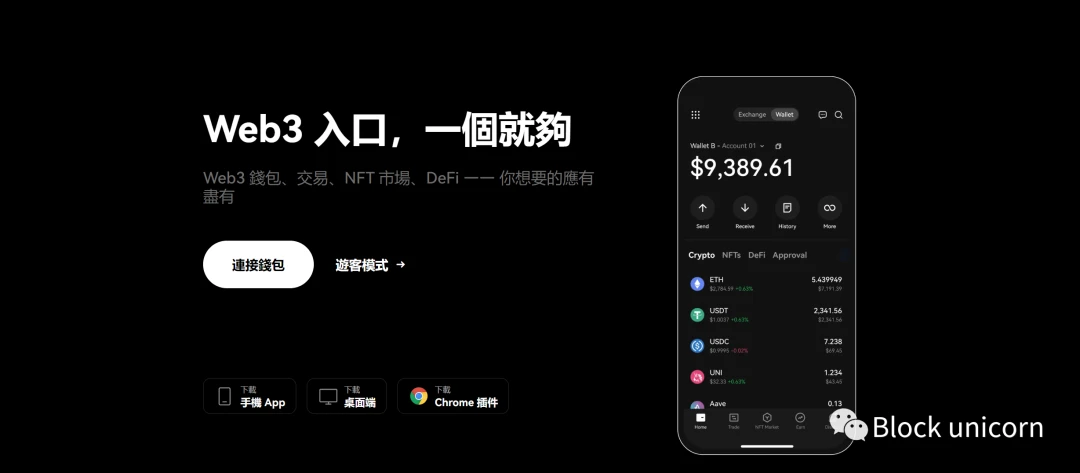Author: Peng Yong
Source: Block unicorn

In the last article, it has been a week, and now there is information about BRC20 everywhere, and the market is becoming increasingly greedy. This article will introduce various RC20 and trading tools, such as SOL20, SRC20……
On Tuesday this week, Binance launched the second BRC20 (Inscription) token—SATS, which once again injected vitality into the entire BRC20 ecosystem, bringing positive signals for the further development and market performance of BRC20 tokens. Binance's co-founder He Yi also stated in a live broadcast: "To be honest, we still have room for improvement in every aspect. Specifically, we have a dedicated team responsible for iteration in product development, such as the issues with the Web3 wallet that everyone often mentions. Our previous investment in certain areas was indeed insufficient, but we will continue to optimize and improve according to user needs.

Due to Binance's inadequate support for BRC20 in the wallet, it has lost its early competitive advantage. In May of this year, OKX announced its participation in the construction of BRC20, strengthening the wallet's support for BRC20. Data from Dune on December 13th showed that the total transaction volume on the Bitcoin network's Ordinals protocol chain was close to 920 million US dollars, with OKX Web3 wallet accounting for approximately 88% of the market share. Binance currently launched ORDI and SATS to show the market that they actually value the support for BRC20.
The continuous support of BRC20 ecosystem and tokens by the two major exchanges, Binance and OKX, signifies its future potential. Binance's continuous listing of BRC20 tokens can enable BRC20 to gain wider recognition and liquidity. With the support of other mainstream trading platforms or wallets, the ecosystem and influence of BRC20 will further expand, attracting more attention and providing more opportunities for investors and participants.
How to participate?
To participate in the early market and opportunities, you need to understand more tools and basic knowledge to reduce your trading risks. The well-known BRC20 is a protocol built on the Ordinals protocol, and there are many other RC20 protocols based on Ordinals.
Basic knowledge
Today, let's use the most popular way to understand all protocols based on Ordinals. In addition to BRC20, there are also ARC20, IERC20 (Ethereum), CBRC20, SOL20 (Solana), DRC20 (DOGE), ASC20 (AVAX), ORC20, LRC20 (Litecoin), TRC20 (Wave), SRC20 (only supports Bitcoin addresses starting with 1), Ethrunes (Ethereum runes), and many other new RC20 protocols based on public chains based on Ordinals, and more will be added in the future, too many to count.
With so many BRC20 protocols based on Ordinals, there is no need to understand all of them, and it is impossible to understand them all clearly. You only need to understand the underlying nature of these protocols, so that you can have a certain basic understanding of the whole picture.
Like BRC20, they are essentially the same at the underlying level, using 1 satoshi for transfers and writing identifying information in the transfer memo box to issue tokens, NFTs, domain names, bills, stamps, etc. (1 satoshi is the smallest unit of Bitcoin, and other RC20 protocols also issue tokens using the smallest unit of L1 chain tokens), identifying information in each unit is recognized through an indexer (you can refer back to the previous article "The New Wave of Bitcoin Ecosystem: The Present and Future of BRC20" to understand the underlying nature of BRC20).
The difference between them and BRC20 is that they have made some modifications based on the basics, such as simplifying information and reducing byte data, token naming length, enhancing the efficiency of the indexer, increasing protocol security, etc. Just as some public chains enhance TPS, some for more security, and some for increased flexibility in contract coding, etc.
In this article, we will not delve into and analyze the differences in detail. Here, it is just to provide everyone with a basic understanding, and the content will gradually progress from shallow to deep.
BRC20 Tools
The importance of tools in human life cannot be ignored, as they not only greatly improve efficiency. In the Web3 environment, we must understand wallets, trading platforms, and data platforms, which can help us manage our funds and make better trading decisions.
Wallets
1. OKXWeb3 Wallet
Currently, the most widely used wallet for trading BRC20, in addition to supporting BRC20 and ARC20 transactions and issuing tokens, NFTs, and domain names, it also supports the RC20 protocol of public chains running smart contracts. The wallet with a highly praised trading experience is the OKXWeb3 wallet, and OKX Web3 wallet is also very willing to help some BRC20 protocols solve problems for free, thereby improving the industry's technical level. The OKX Web wallet is very user-friendly for novice users, and it automatically pops up risk prompts when browsing unknown web pages.

Download link: www.okx.com. Currently, the OKX Web3 wallet supports BRC20 and SRC20 (this protocol only supports Bitcoin addresses starting with 1, not bc1), although it supports SRC20, the OKX wallet front end does not display it yet. In terms of language support, the mobile end supports Chinese, and the web end supports 21 mainstream languages.
Trading market function: The mobile and web ends of the OKX Web3 wallet both have built-in functions for trading and issuing BRC20 tokens, NFTs, and domain names, and the OKX Web3 wallet also has a good depth of market trading for BRC20.
2. Unisat Wallet
The OG wallet in the BR20 ecosystem, the earliest to support the BRC20 protocol, has opened up new avenues for the industry. UnisatDEX still requires enough points to use new features, as it did in April and May of this year, and now users need 400 points to use DEX.
Download link: https://unisat.io/, currently supports BRC20, SRC20 (trading SRC20 tokens requires switching to 1-starting addresses in the wallet settings), but there is no mobile wallet, only a Google Chrome browser extension wallet.
Trading market function: Unisat's desktop web version has built-in functions for trading and issuing BRC20 tokens, NFTs, domain names, etc. The trading depth of BRC20 is second only to the OKX Web3 wallet.
Summary: For trading and issuing BRC20 tokens, NFTs, and domain names, OKX Web3 wallet and Unisat can almost meet all users' needs. For assets such as CR20 tokens and NFTs issued on smart contract public chains (ETH, SOL, AVAX, etc.), you can use the OKX Web3 wallet.
3. AtomicalWallet
AtomicalWallet is the best wallet that supports the ARC20 protocol (Atomicals Protocol). Currently, there is no mobile app, only a Google Chrome browser extension wallet, and the web version does not have a built-in trading market.
Download link: https://atomicalswallet.com/
- Unielon Wallet
Unielon is a plugin wallet that supports the DRC20 protocol. Currently, it is only available on the web version, with no mobile app. DRC20 refers to the RC20 protocol issued on the DOGE (Dogecoin) chain.
Download link: unielon.com
Trading market function: The Unielon official website has functions for trading and issuing DRC20 tokens, NFTs, domain names, and other asset types. Trading is as simple as Uniswap, supporting the addition of LP (liquidity) trading pairs, candlestick charts, and data analysis.
When users want to trade DRC20, they need to first convert their DOGE coins to WDOGE on the -Wdoge- trading interface before they can trade DRC20 tokens. After the conversion, they can trade DRC20 tokens in the -Convert- section.
Summary: Atomical Wallet only supports the ARC20 protocol (Atomicals Protocol), which we will introduce later. As for other wallet tools on the Dogecoin chain, I have not used them myself, so I did not include them in the content.
Trading Platform Tools
Below, I will introduce trading tools for RC20 one by one. Since the above wallets cannot do what these tools can do, we need more excellent combination tools.
ARC20 Trading Market
- Atomical Market is a trading platform that provides ARC20 tokens and NFT trading. Users can mint tokens by entering the token name in the search box. ARC20 stands for Atomicals Protocol (also known as ATOM) and is based on the Bitcoin network.
Link: atomicalmarket.com
SRC20 Trading Market
- Stampscan supports trading and issuing tokens and provides data on the top 100 token holdings. However, the trading depth is slightly lower than Openstamp.
Link: www.stampscan.xyz
- Openstamp is the platform with the best trading depth for SRC20 tokens, NFTs, and stamps. It also supports ARC20 token trading and issuance, NFTs, and stamps.
Link: openstamp.io
ASC20 Trading Market
- Avascription is the trading market for ASC20. ASC20 is a protocol developed on the AVAX chain. Although public chain RC20 is supported by the OKX Web wallet, Avascription is needed to find ASC20 tokens, balances, transfers, tokens being minted, and to trade and issue ASC20 tokens.
Link: avascriptions.com
SOL20 Trading Market
- Tensor trade is an NFT trading platform on the Solana blockchain network, and it also supports SOL20 token and NFT trading.
Link: tensor.trade
- Magiceden is the strongest NFT trading platform on Solana, where users can switch to Solana on the website to see SOL20 NFT and token trading. In addition, Magiceden also supports BRC20 NFT trading.
Link: magiceden.io
IERC20 Trading Market
- IERC20 is the RC20 protocol on the Ethereum network, and users can trade IERC20 tokens, mint tokens, and issue tokens on their official website.
Link: ierc20.com
ETHs Trading Market
- Facetswap is a decentralized DEX based on ETHs, similar to Uniswap. When trading, users need to convert ETH to FETH. The "Bridge" button can be found in the top right corner of the website to enter the interface for exchanging ETH for FETH.
Link: facetswap.com
- Ethscriptions allows trading of ETHs NFTs, but the user experience is very poor.
Link: Ethscriptions.com
- ETCH allows trading of tokens, NFTs, and domain names, and it is also an indexer for Ethscriptions and an IDO platform for ETHs.
Link: www.etch.market
Ethrunes Trading Market
- Ethrunes is the RC20 trading market on Ethereum, also known as Ethereum runes. Users can trade, mint, and issue tokens directly through the website or the OKX Web3 wallet.
Link: ethrunes.xyz
TRC20 Trading Market
- Trximarkets is the TRC20 trading market developed on the Tron (TRX) network, supporting trading of TRC20 tokens, minting, transfers, and issuance (this platform has higher risk).
Link: Trximarkets.com
Summary: CBRC20 trading is very cumbersome, requiring users to create buy orders in the Discord community, and for selling, they can use Runex.tech, but the user experience is poor. ORC20 currently does not have a trading market, and LRC20 (Litecoin) is not included due to low usage.
Data Tools
In this still incomplete market, there are not many data platforms available, and the most data tools are for the BRC20 ecosystem.
BRC20 Data Tools
www.brc-20.io is the OG data platform for BRC20. It provides information on BRC20 token market value, 24-hour token trading volume, address balances, and also includes a DEX (decentralized exchange).
www.geniidata.com has comprehensive functions. Users can search for newly listed BRC20 and ORC20 tokens, address balances, NFTs, tokens being minted, videos, SVG, audio, and indices. In addition, users can also issue tokens, NFTs, videos, etc., through this data platform.
Summary
The initial trading tools for the BRC20 ecosystem have begun to take shape, and with subsequent iterative updates and DEFI liquidity mining, these functions will be further improved. This will drive the explosive application of BRC20 in the Bitcoin network ecosystem, providing users with a richer trading experience.
免责声明:本文章仅代表作者个人观点,不代表本平台的立场和观点。本文章仅供信息分享,不构成对任何人的任何投资建议。用户与作者之间的任何争议,与本平台无关。如网页中刊载的文章或图片涉及侵权,请提供相关的权利证明和身份证明发送邮件到support@aicoin.com,本平台相关工作人员将会进行核查。




